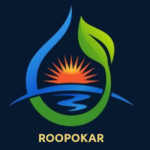Activated sludge plant
Activated sludge
The activated sludge process is a type of biological wastewater treatment process for treating sewage or industrial wastewaters using aeration and a biological floc composed of bacteria and protozoa. It uses air (or oxygen) and microorganisms to biologically oxidize organic pollutants, producing a waste sludge (or floc) containing the oxidized material. The general arrangement of an activated sludge process for removing carbonaceous pollution includes the following items: An aeration tank where air (or oxygen) is injected in the mixed liquor. This is followed by a settling tank (usually referred to as “final clarifier” or “secondary settling tank”) to allow the biological flocs (the sludge blanket) to settle, thus separating the biological sludge from the clear treated water. Part of the waste sludge is recycled to the aeration tank and the remaining waste sludge is removed for further treatment and ultimate disposal.
Sludge production:
Activated sludge is also the name given to the active biological material produced by activated sludge plants. Excess sludge is called “surplus activated sludge” or “waste activated sludge” and is removed from the treatment process to keep the ratio of biomass to food supplied in the wastewater in balance. This sewage sludge is usually mixed with primary sludge from the primary clarifiers and undergoes further sludge treatment for example by anaerobic digestion, followed by thickening, dewatering, composting and land application.
The amount of sewage sludge produced from the activated sludge process is directly proportional to the amount of wastewater treated. The total sludge production consists of the sum of primary sludge from the primary sedimentation tanks as well as waste activated sludge from the bioreactors. The activated sludge process produces about 70–100 grams per cubic metre (1.9–2.7 oz/cu yd) of waste activated sludge (that is grams of dry solids produced per cubic metre of wastewater treated). 80 grams per cubic metre (2.2 oz/cu yd) is regarded as being typical.[6] In addition, about 110–170 grams per cubic metre (3.0–4.6 oz/cu yd) of primary sludge is produced in the primary sedimentation tanks which most – but not all – of the activated sludge process configurations use.


Roopokar Trade Center !
It has professionally qualified & Experienced Engineering team. The Company under takes consultancy on total implement turnkey project consisting of design, Engineering Manufacturing, Installation & Troubleshooting of textile machinery, Boilre etc. We are capable of conducting business in large volumes as per best Quality products at very competitive price. We always focus on the investment and upgrading technology manufacturing, expansion, raising Quality products.
Hey, We are looking Forward to start a project with You !
Roopokar Trade Center, a broadly acclaimed name to serve environmental sustainable solutions to the different industries across continents for more than one decade, covers the end to end value chain from designing to construction and operations as well as maintenance.